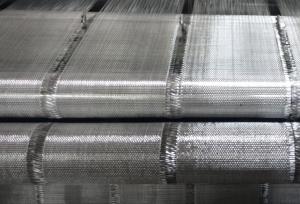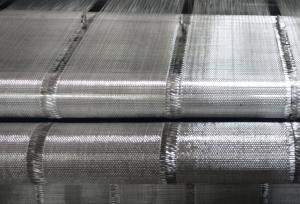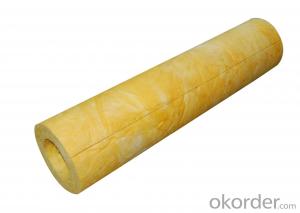GLASS FIBER WOVEN ROVING FOR BOAT PRODUCTION
- Loading Port:
- Shanghai
- Payment Terms:
- TT or LC
- Min Order Qty:
- 2000 m²
- Supply Capability:
- 50000 m²/month
OKorder Service Pledge
OKorder Financial Service
You Might Also Like
Structure of woven roving Description
1.Glass Woven Roving are bidirectional fabric made by direct roving in plain weave pattern . 2.High quality roving 3.Skilled workers to operate, to ensure the quality of fabric 4. Any width we can operate 5.Perfact packing 6.including the EWR200.EWR400,EWR570....cwr135,cwr180.cwr200.cwr500..... 7.The details as per customer requriments
Main Features of the woven roving
1. Low Fuzz,dirt,impurity and other stains.......
2. Fast wet-out.
3. Even thickness
4.Good covering
Woven roving Images:
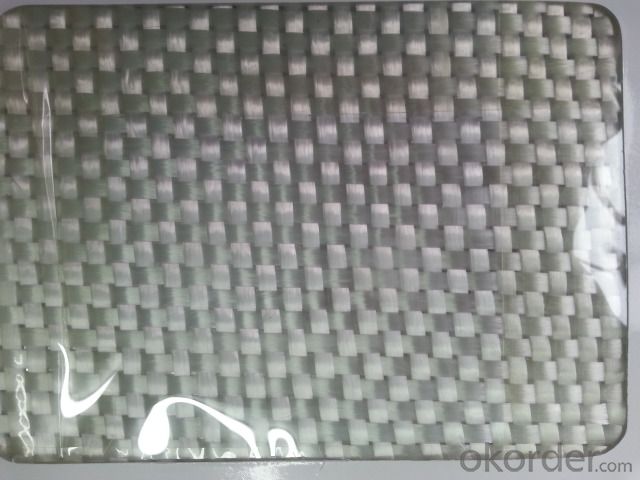
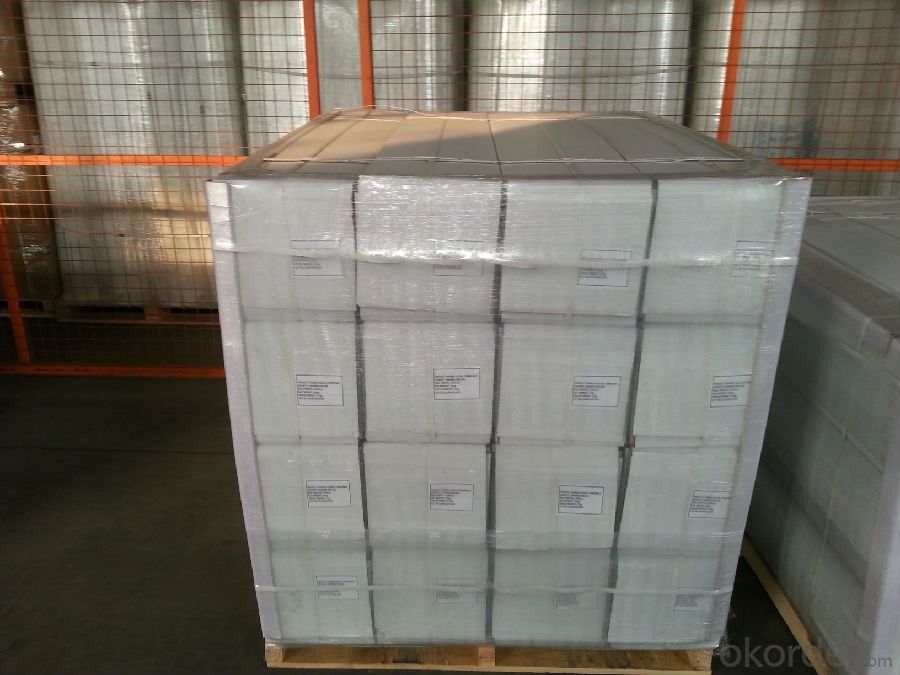
Woven roving Specification:
Normal type | EWR800-1000 | Test Standard |
Apperance | Good | GB/T 18370-2001 |
Density(warpxweft)(end/cm) | 1.8 X 1.5 | GB/T 7689.2-2001 |
Tex (warpxweft) | 2400x2400 | ISO1889 |
Moisture content(%) | ≤0.10 | ISO3344 |
Loss on ignition(%) | 0.40-0.80 | ISO1887 |
Glass | E-glass | N/A |
FAQ of woven roving:
Woven Roving is a high –performance reinforcement widely used in hand lay-up and machanical production
1) Good moldability & drapability
2) High strength
3) Excellent rollout characteristics
4) Fast wet -out
- Q:Can fiberglass mat tissue be used for making lightweight stairs?
- Making lightweight stairs is possible using fiberglass mat tissue. This material, composed of randomly oriented glass fibers bonded with resin, is widely used in the construction and manufacturing industries because of its strength, durability, and lightweight nature. By layering and molding fiberglass mat tissue, it can create a sturdy yet lightweight structure for stairs. Its impressive tensile strength and dimensional stability make it capable of supporting the weight of individuals using the stairs. Additionally, fiberglass mat tissue is resistant to moisture, chemicals, and UV rays, making it perfect for outdoor or high-moisture environments. Its fire-resistant properties further enhance its suitability for stairs, ensuring safety. In conclusion, fiberglass mat tissue is an excellent option for crafting lightweight stairs due to its combination of strength, durability, and resistance to various environmental factors.
- Q:Is fiberglass mat tissue resistant to acids?
- Fiberglass mat tissue is generally resistant to acids, thanks to its excellent corrosion resistance properties. This resistance extends to various acids. When combined with resin, fiberglass mat becomes a strong and durable material that can withstand exposure to a wide range of chemicals, including acids. However, it's important to note that the resistance of fiberglass mat tissue can still be affected by the specific type and concentration of acid. Highly concentrated or aggressive acids, in some cases, may cause damage or degradation to the material over time. Consequently, it is always advisable to consider the specific acid being used and consult the manufacturer's recommendations for compatibility before exposing fiberglass mat tissue to an acidic environment.
- Q:Can fiberglass mat tissue be used for waterproofing?
- Yes, fiberglass mat tissue can be used for waterproofing. Fiberglass mat tissue is a thin, non-woven material that is made from fiberglass fibers. It is commonly used in construction and building applications to provide reinforcement and waterproofing properties. When applied with a waterproofing agent or resin, the fiberglass mat tissue can create a waterproof barrier that helps to prevent the passage of water or moisture. This makes it an effective choice for applications such as roofing, basement waterproofing, and bathroom or shower installations. The strength and durability of fiberglass mat tissue also make it resistant to cracking or tearing, ensuring long-lasting waterproofing protection.
- Q:What is the delamination strength of fiberglass mat tissue?
- The delamination strength of fiberglass mat tissue refers to its ability to resist separation or peeling of layers within the material. It is a measure of the adhesive strength between the fibers and the binder in the mat. The specific delamination strength of fiberglass mat tissue can vary depending on factors such as the manufacturing process, binder type, and overall composition of the material.
- Q:Can fiberglass mat tissue be used in wet environments?
- Indeed, wet environments can indeed accommodate the utilization of fiberglass mat tissue. This specialized material has been ingeniously engineered to possess an inherent resistance to moisture, thereby enabling it to endure prolonged exposure to water. Consequently, this remarkable attribute renders it highly suitable for deployment in various sectors, most notably construction, marine, and automotive industries. These particular domains frequently necessitate the deployment of components or structures that inevitably encounter water, humidity, or moisture. The material's unparalleled resistance to water impeccably guarantees the preservation of its structural robustness and ensures that it remains impervious to degradation or any diminishment in its performance properties even when confronted with damp conditions.
- Q:Is fiberglass mat tissue suitable for insulation in cold storage facilities?
- Yes, fiberglass mat tissue is suitable for insulation in cold storage facilities. It offers excellent thermal insulation properties and is commonly used in such environments to maintain low temperatures and prevent heat transfer. Additionally, fiberglass is resistant to moisture, which is important in cold storage facilities where condensation can occur.
- Q:What is the dimensional stability of fiberglass mat tissue?
- The dimensional stability of fiberglass mat tissue refers to its ability to maintain its size and shape under various conditions. Fiberglass mat tissue is known for its excellent dimensional stability, making it highly resistant to shrinking, expanding, or warping. This stability is achieved through the manufacturing process, which involves bonding glass fibers together using a binder material. This binder not only ensures the integrity of the mat tissue but also helps it maintain its dimensional stability over time. Additionally, the inherent properties of fiberglass, such as its high strength and stiffness, contribute to its exceptional dimensional stability. These characteristics make fiberglass mat tissue a popular choice in various applications, including construction, automotive, and aerospace industries, where consistent dimensions are crucial for optimal performance and durability.
- Q:How does the fiber orientation of fiberglass mat tissue affect its strength?
- The fiber orientation of fiberglass mat tissue greatly affects its strength. When the fibers are aligned in a specific direction, they provide maximum strength in that direction. However, if the fibers are randomly oriented, the overall strength of the material is reduced as the load may not be evenly distributed among the fibers. Therefore, proper fiber orientation is crucial in maximizing the strength of fiberglass mat tissue.
- Q:Can fiberglass mat tissue be used for insulation in power generation facilities?
- Certainly, insulation in power generation facilities can make use of fiberglass mat tissue. This versatile material is frequently employed for insulation due to its exceptional properties in thermal and electrical insulation. With resistance to high temperatures, it effectively captures and hinders heat transfer, thus making it highly suitable for power generation facilities where heat management is vital. Moreover, fiberglass mat tissue is lightweight, easily installed, and provides durability and longevity, rendering it a cost-effective option for insulation in such facilities.
- Q:Glass fiber cotton or ceramic fiber paper insulation?
- Glass fiber cotton bar, there are more air inside, the effect may be better
1. Manufacturer Overview |
|
|---|---|
| Location | |
| Year Established | |
| Annual Output Value | |
| Main Markets | |
| Company Certifications | |
2. Manufacturer Certificates |
|
|---|---|
| a) Certification Name | |
| Range | |
| Reference | |
| Validity Period | |
3. Manufacturer Capability |
|
|---|---|
| a)Trade Capacity | |
| Nearest Port | |
| Export Percentage | |
| No.of Employees in Trade Department | |
| Language Spoken: | |
| b)Factory Information | |
| Factory Size: | |
| No. of Production Lines | |
| Contract Manufacturing | |
| Product Price Range | |
Send your message to us
GLASS FIBER WOVEN ROVING FOR BOAT PRODUCTION
- Loading Port:
- Shanghai
- Payment Terms:
- TT or LC
- Min Order Qty:
- 2000 m²
- Supply Capability:
- 50000 m²/month
OKorder Service Pledge
OKorder Financial Service
Similar products
New products
Hot products
Hot Searches
Related keywords
